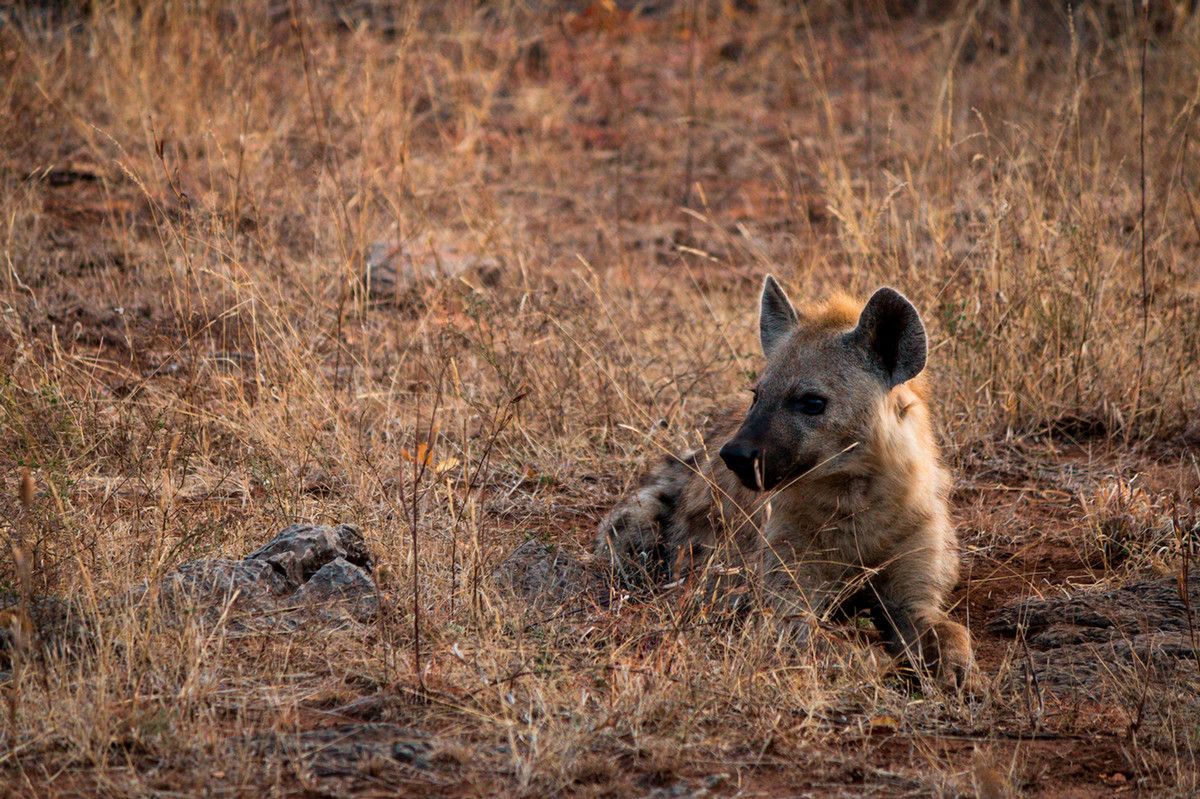What do African carnivores say when they greet one another? “Hi”-ena!
These polka-dotted predators are the size of a large dog, with powerful jaws and keen eyesight. They’re happy to scavenge but also shrewd hunters. And despite their reputation as slinking cowards, spotted hyenas are smart, plucky, and team-oriented—characteristics that have helped make them the most common large carnivore on the continent.
Hyena society is no joke, either. Here, it’s all about girl power: in their matrilineal packs, alpha females rule. Everyone adheres to their rank, which they inherit from their mom. But mature males will sometimes break off and join a new pack, often to reduce population density or vie for higher social status.
Such group complexity requires strong communication skills. What do hyenas talk about? Prey-sent events! In fact, once these predators have killed their prey, you might hear their signature laugh: in the squabble over a freshly killed carcass, spotted hyenas “laugh” to signal irritation, aggression, frustration, or defensiveness. They’d be a bad audience at the comedy club, because for spotted hyenas, laughter expresses conflict, not joy.
Their high-pitched signature giggle conveys ample information to the listener. A laughing hyena communicates their social rank and age, helping them negotiate for their fair share of a meal, or to tell a peer to back off.
Spotted hyenas produce plenty further vocalizations, too. They groan, whoop, and low, each expressing a different idea. But nothing catches our ear more than hyenas in hysterics.










